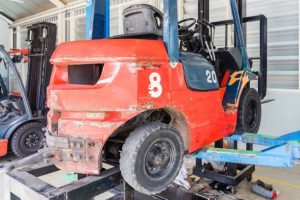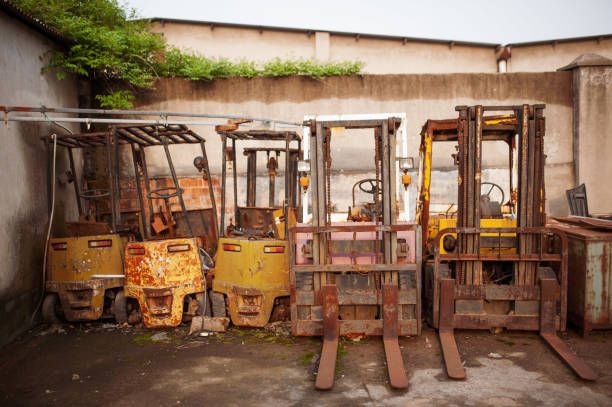When is it Time to Retire Your Used Forklift?
There’s no question about it: forklifts are essential pieces of materials handling equipment. It’s not hard to form a sentimental bond with a battered and bruised forklift that’s seen your business through good times and bad. The time comes, though, when you have to face the fact that it’s time to retire your used forklift. How do you know when that time has come?
Conventional wisdom states that a forklift’s useful lifetime is between 10,000 and 20,000 hours of operation, depending on its workload. That’s quite a time span, though, and many used forklifts clock up far more than 20,000 hours before they’re retired. Judging by the clock gives you only a limited understanding of your forklift’s potential longevity. There are several other factors to take into consideration:
• Is your forklift electric or IC? Electric forklifts tend to outlast IC forklifts.
• Is your an indoor or outdoor forklift? Forklifts used indoors and out of the weather outlast forklifts that have to operate outdoors in less than ideal conditions.
• Have you regularly maintained your forklift? Studies prove that regular maintenance leads to a longer useful forklift life.
• How heavy is your forklift’s workload? A forklift that does repetitive light to medium tasks will generally last longer than a lift truck that is used close to its carrying capacity limits
Even taking all these variables into account, it’s still hard to determine whether or not it’s time to retire your used forklift. Would it be more cost-effective to put the old “warhorse” onto lighter duties or is it time to let it go?
Maintenance Costs Are the Key
The advantages of sticking to a regular maintenance schedule cannot be overemphasized. Even new forklifts should be put on a regular schedule and the schedule stuck to. If you stick to the schedule and keep maintenance records, you’ll see patterns emerge over time. During the first year of operation, maintenance costs will be minimal, if there are any at all. By the end of the second year, the now used forklift will start to cost money. It might be as little as $1.50 an hour and hardly worth thinking about, but it’s still a valuable statistic.

Image courtesy of iStock by Getty Images – Photo by pisittar
Maintenance costs will creep up over the years, possibly doubling by year 5, depending on use. At some point, perhaps at around 10,000 hours, maintenance costs will become higher as major parts begin to wear out and need replacing. This is when you’ll need to start weighing the cost benefits of ongoing maintenance versus replacement costs in the balance.
If you’ve kept good maintenance records, you’ll be able to analyze them and see what your money is being spent on. There’s no sense considering replacing a good used forklift if you’ve just had to replace tires, belts, and other parts that require regular replacement. It’s when other parts, both large and small start to wear out, that you need to take heed of the warning signs.
Those small, inexpensive parts can seem like insignificant expenses when looked at individually, but if you do an audit at the end of each year, you might be surprised by how much they can add up. Throw in the more expensive replacement costs and your forklift may have reached the tipping point.
to be continued . . .

